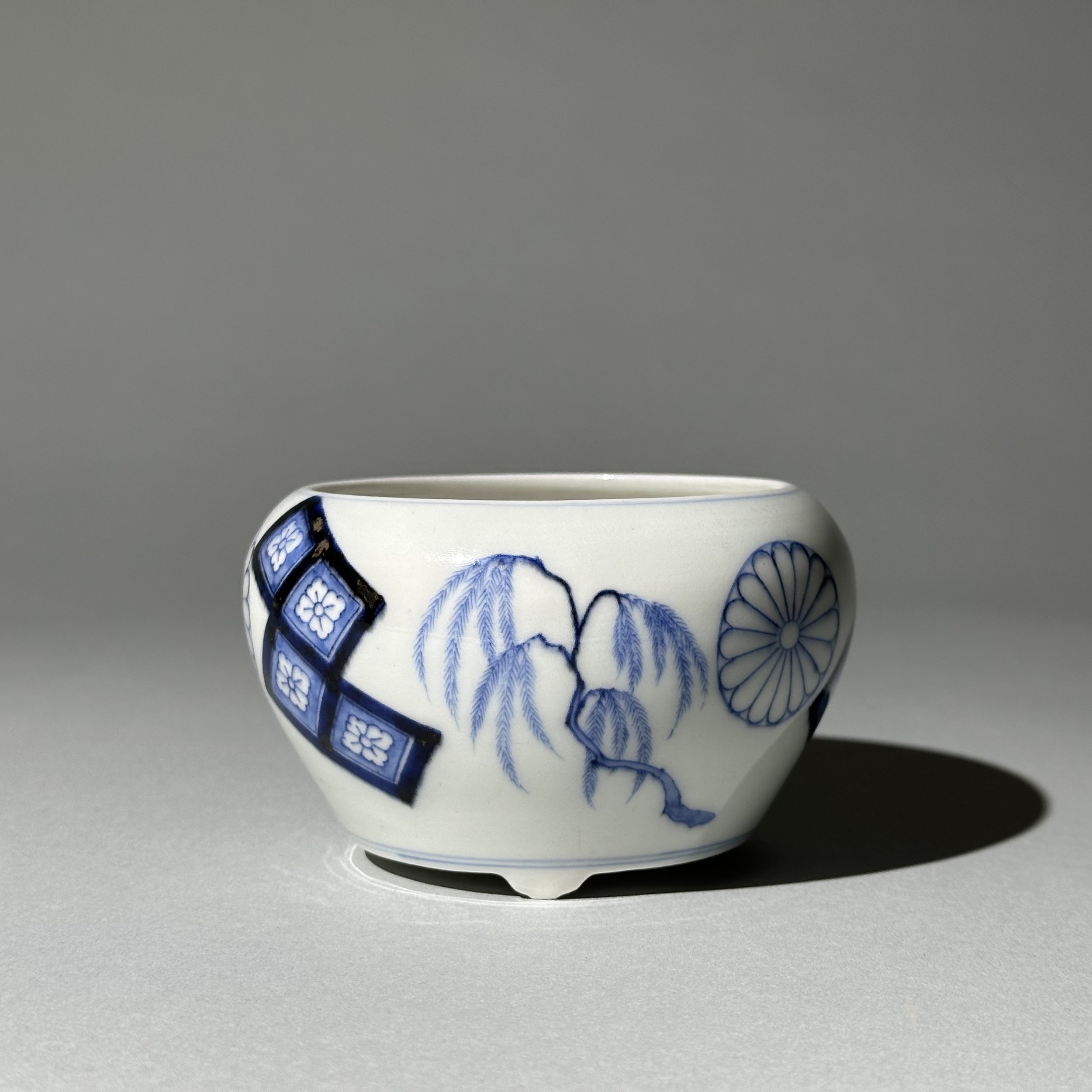 Image 1 of 6
Image 1 of 6

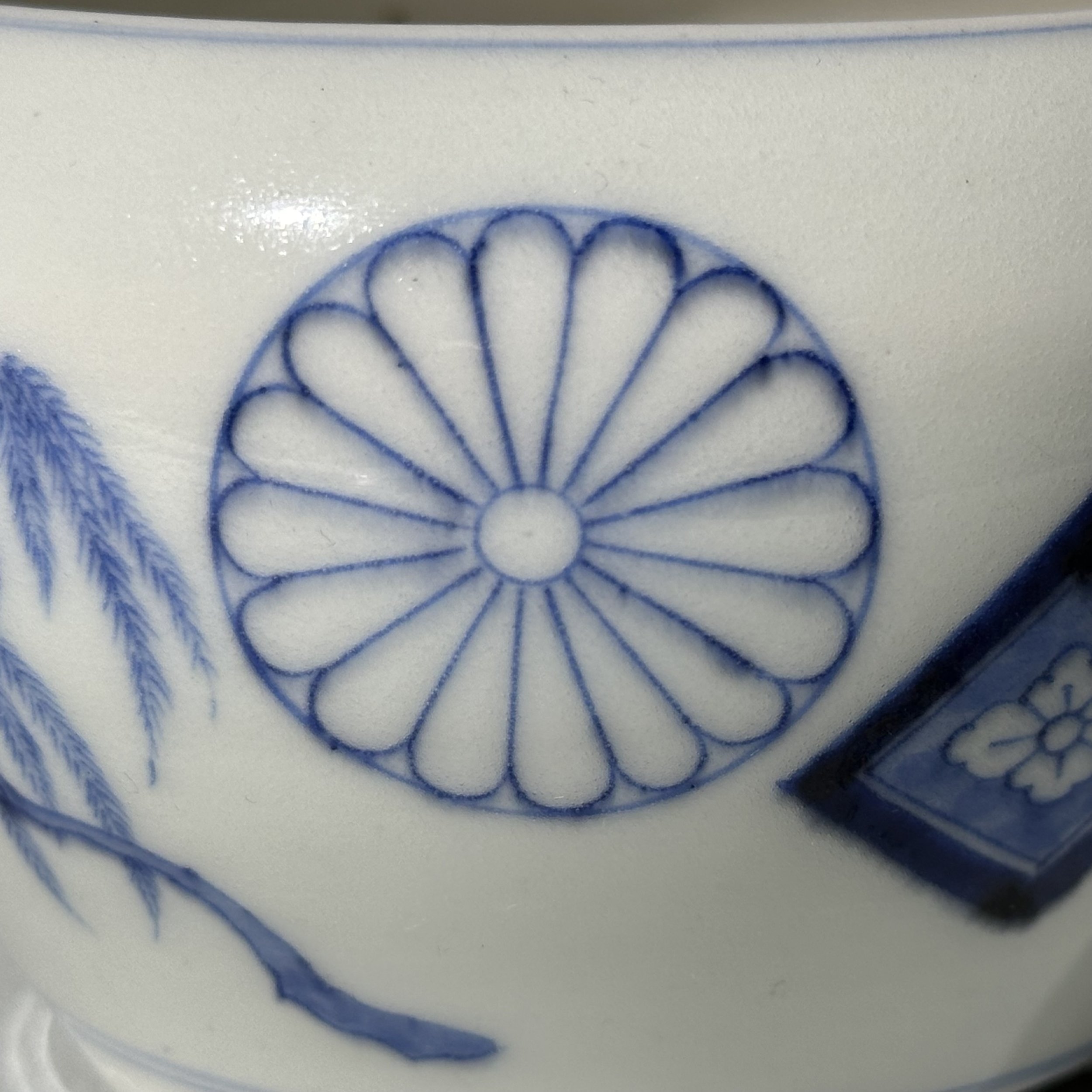 Image 2 of 6
Image 2 of 6

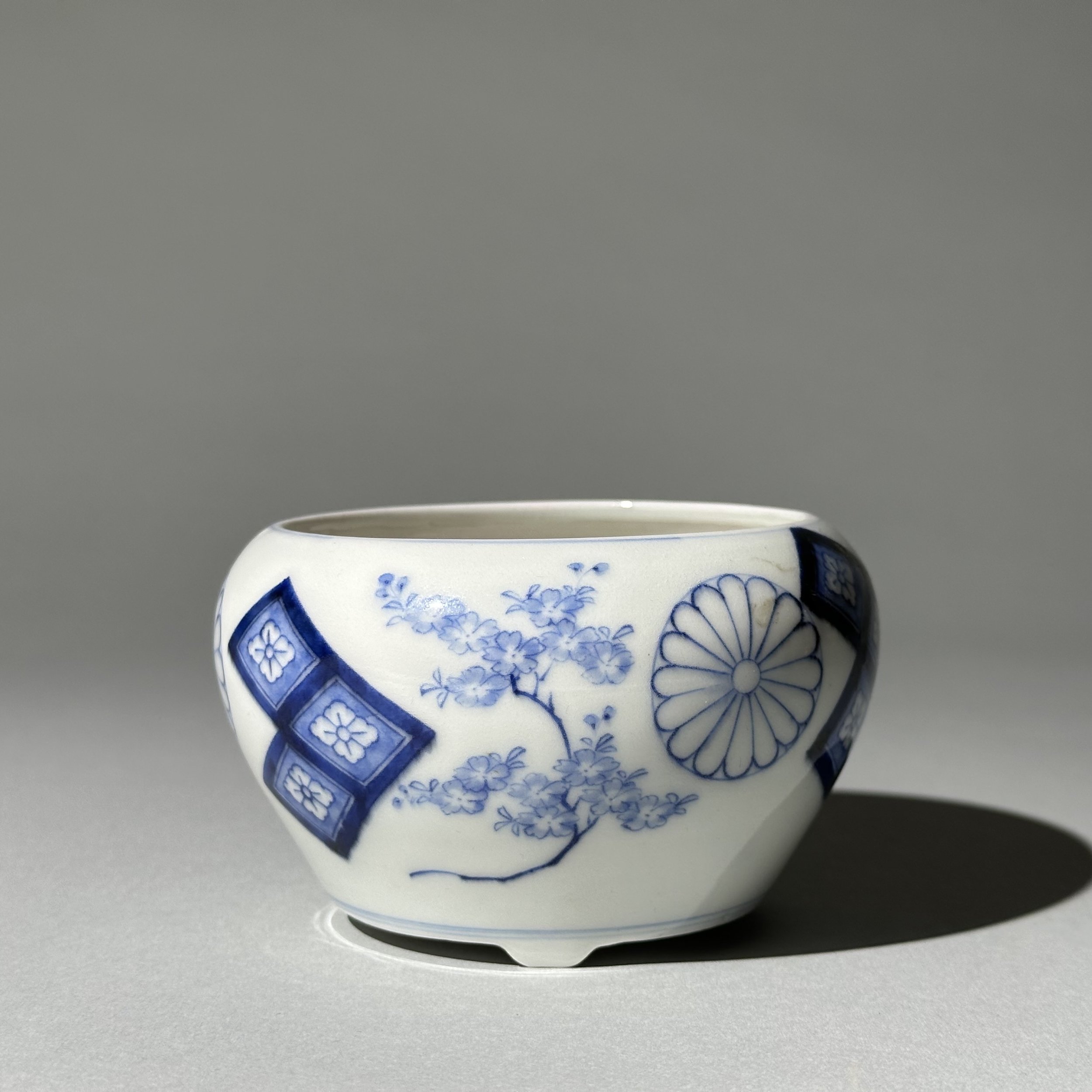 Image 3 of 6
Image 3 of 6

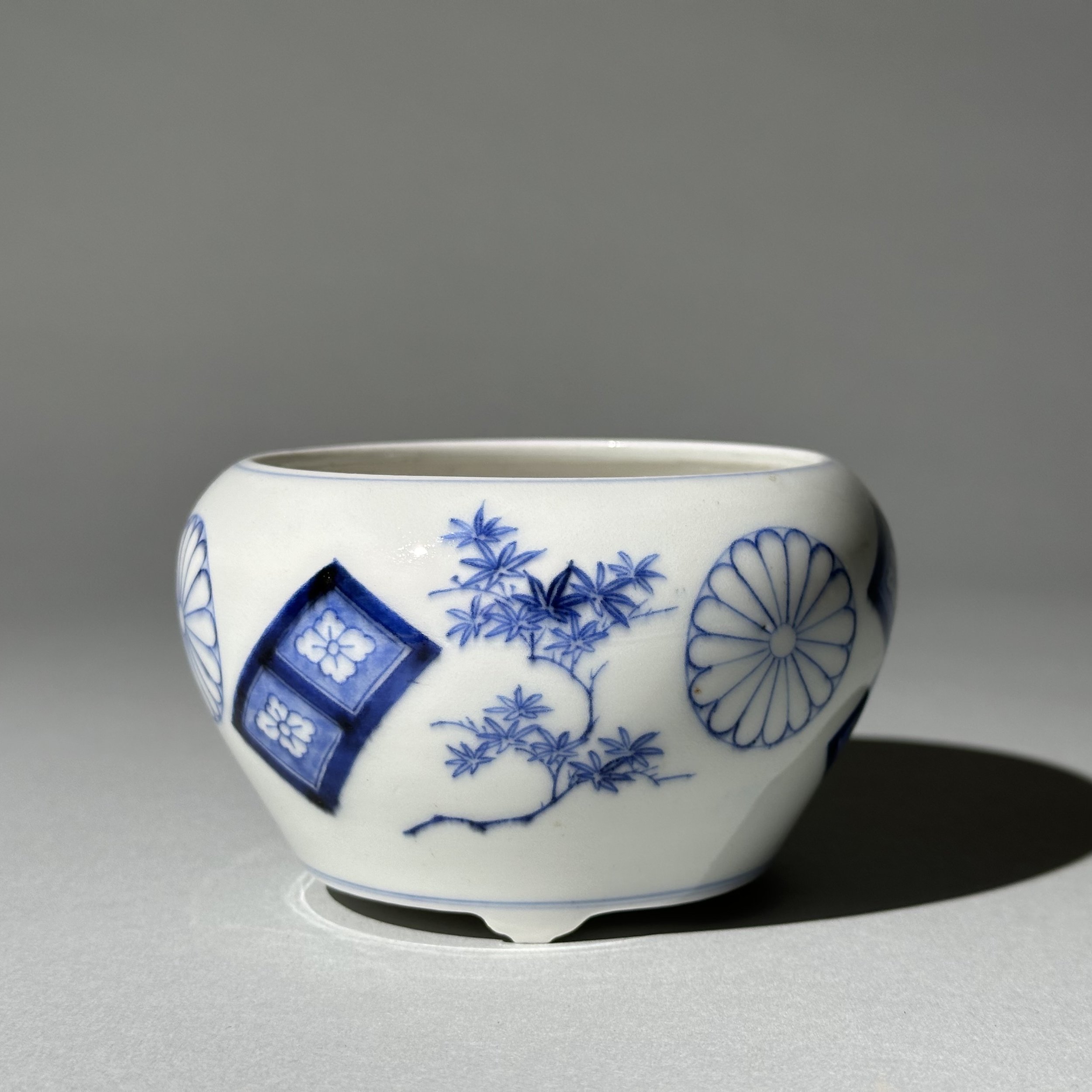 Image 4 of 6
Image 4 of 6

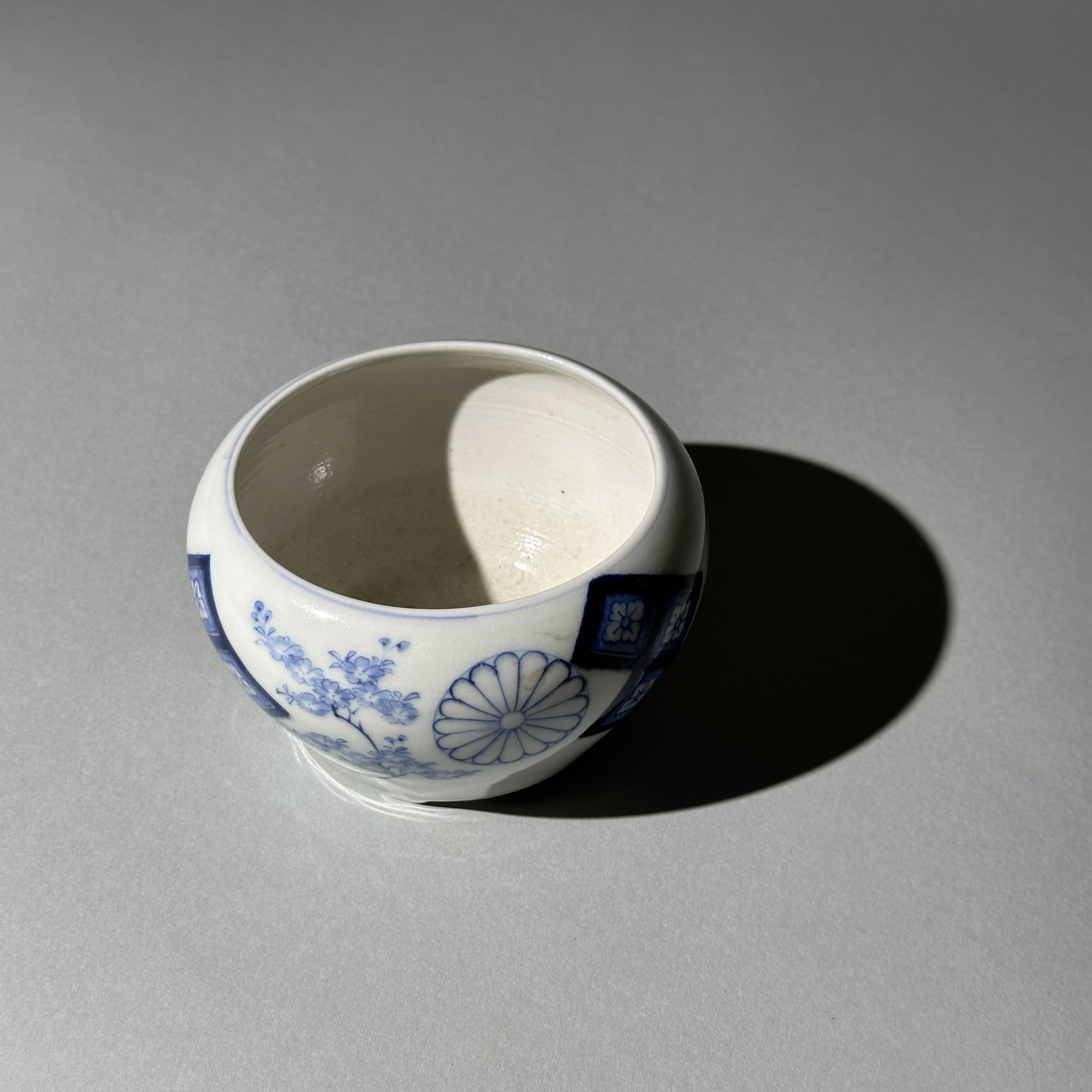 Image 5 of 6
Image 5 of 6

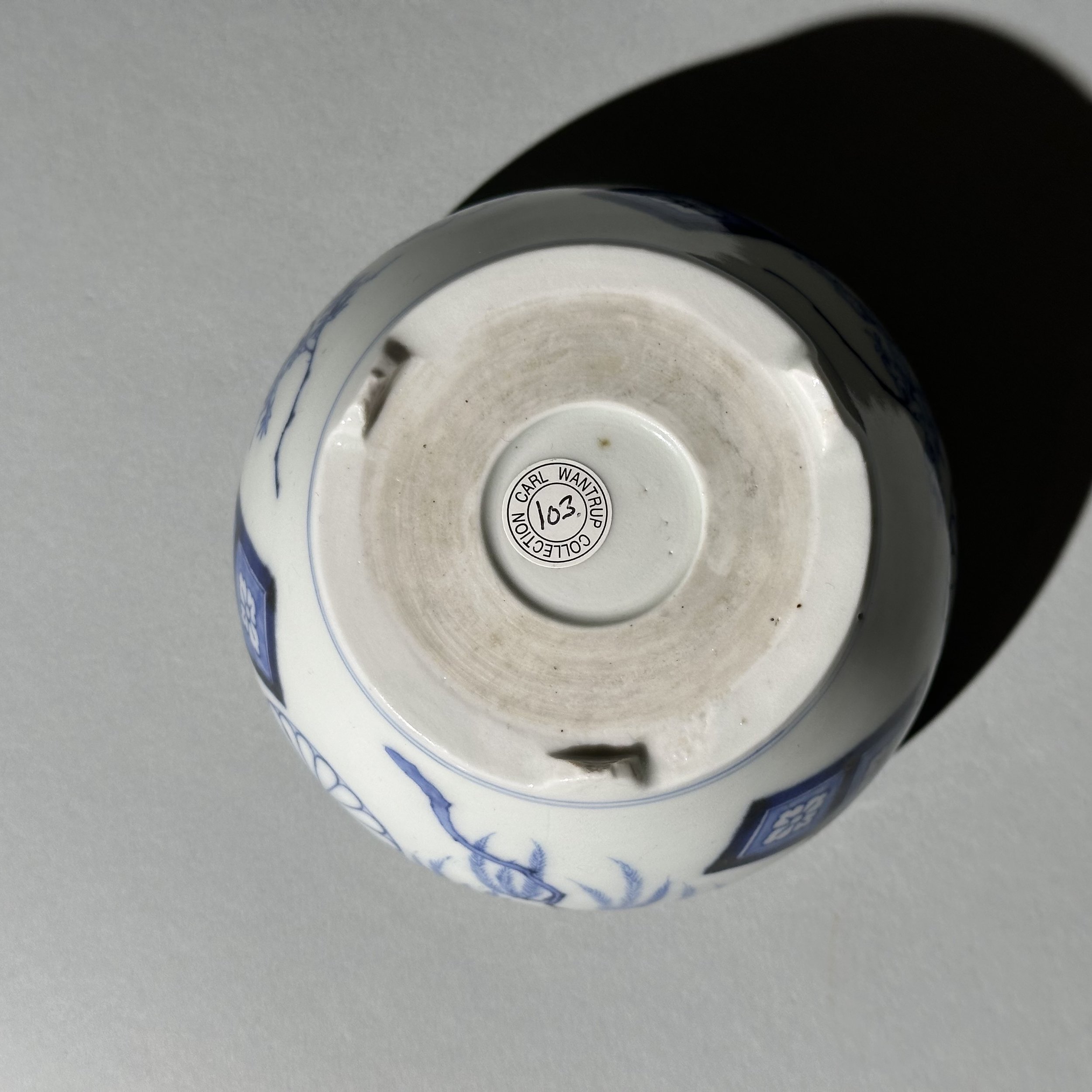 Image 6 of 6
Image 6 of 6







Imperial blue and white censer (koro)
Tsuji Hitachi kiln, Arita, Japan
Edo Period (1603-1868), c. 1800-1850
Of rounded form in finely potted porcelain with inwardly turning mouth and raised on three small feet, decorated with three Imperial kikumon crests between willow, cherry blossom and maple in underglaze blue. 7cm high, 11 diameter.
Cat. 103
Tsuji Hitachi kiln
The Tsuji house has been making pottery for the Imperial Household since 1664. From the mid 18th Century to the Meiji Period, it purveyed fine white porcelain with delicate symbolic motifs relating to longevity and other auspicious wishes interspersed with precisely painted Imperial sixteen-petalled chrysanthemum crests, the symbol of the Imperial household. These wares include tea bowls, food bowls and dishes, and more rarely censers. These wares were sometimes given as gifts by the Emperor to noble retainers and families and as gifts to daimyo including the Tokugawa Shogun. They were then passed down within these families as precious heirloom keepsakes. They began to be released in small numbers onto the open market during the beginning of the tumultuous Meiji Period and then during and after the Second World War.
Tsuji Hitachi kiln, Arita, Japan
Edo Period (1603-1868), c. 1800-1850
Of rounded form in finely potted porcelain with inwardly turning mouth and raised on three small feet, decorated with three Imperial kikumon crests between willow, cherry blossom and maple in underglaze blue. 7cm high, 11 diameter.
Cat. 103
Tsuji Hitachi kiln
The Tsuji house has been making pottery for the Imperial Household since 1664. From the mid 18th Century to the Meiji Period, it purveyed fine white porcelain with delicate symbolic motifs relating to longevity and other auspicious wishes interspersed with precisely painted Imperial sixteen-petalled chrysanthemum crests, the symbol of the Imperial household. These wares include tea bowls, food bowls and dishes, and more rarely censers. These wares were sometimes given as gifts by the Emperor to noble retainers and families and as gifts to daimyo including the Tokugawa Shogun. They were then passed down within these families as precious heirloom keepsakes. They began to be released in small numbers onto the open market during the beginning of the tumultuous Meiji Period and then during and after the Second World War.
Tsuji Hitachi kiln, Arita, Japan
Edo Period (1603-1868), c. 1800-1850
Of rounded form in finely potted porcelain with inwardly turning mouth and raised on three small feet, decorated with three Imperial kikumon crests between willow, cherry blossom and maple in underglaze blue. 7cm high, 11 diameter.
Cat. 103
Tsuji Hitachi kiln
The Tsuji house has been making pottery for the Imperial Household since 1664. From the mid 18th Century to the Meiji Period, it purveyed fine white porcelain with delicate symbolic motifs relating to longevity and other auspicious wishes interspersed with precisely painted Imperial sixteen-petalled chrysanthemum crests, the symbol of the Imperial household. These wares include tea bowls, food bowls and dishes, and more rarely censers. These wares were sometimes given as gifts by the Emperor to noble retainers and families and as gifts to daimyo including the Tokugawa Shogun. They were then passed down within these families as precious heirloom keepsakes. They began to be released in small numbers onto the open market during the beginning of the tumultuous Meiji Period and then during and after the Second World War.
